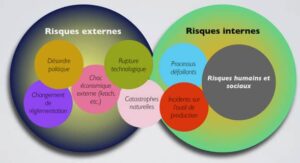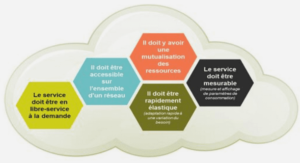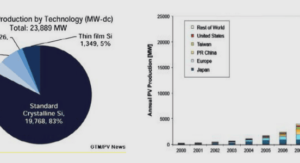CODE SWITCHING AS A MENACE ON URBAN WOLOF
Code switching vs Code mixing
Hudson defines code mixing as ‘a kind of linguistic cocktail a few words of one language, then a few words of the other, then back to the first for a few more words and so on’. It is a more intrinsic merging of different words, moving back and forth through the sentence, the conversation. When we come back to the term “cocktail” it brings more precision on the definition showing that words are fully condense to an extent that elements are likely harsh to be separated. Different points of views arise among scholars who regroup in school of thoughts. While some claim that the two concepts are closely similar and are therefore interchangeable as a cover term, others on the contrary put forward a distinctive approach of the two. Eastman claims there is no difference in the two concepts since “efforts to distinguish Code switching, Code mixing and borrowing are doomed”. As a matter of fact, they can be used interchangeably. They both share hybridization of words, phrases and sentences of two or more languages. For Myers-Scotton this distinction is just creating “unnecessary confusion”. For her the two types have “similar socio-psychological motivations. For this reason, I prefer ‘CS’ as a cover term.” However a great number of scholars like Muysken, Poplack show their agreement on the distinctive apprehension of the terms. Muysken (2004,P.2) uses code-mixing in cases “where lexical items and grammatical features from two languages appear in one sentence” while code switching refers to as “rapid succession of several languages in a single speech event” (Muysken 2004 ibid). Clearly speaking, in a structural view switching alludes to what Poplack calls inter-sentential code switching (alternation of two different languages or language variety within the same conversation) contrariwise code-mixing entails intra-sentential code-switching(alternation which appears inside a sentence). Like Sridhar and Sridhar has noted “the two phenomena make different linguistic and psycholinguistic claims…Code switching does not require the integration of the rules of the two languages involved in the discourse whereas code mixing does.” As far as sociolinguistic aspect is concerned, the former lay emphasis on the pragmatic and social motivations while the latter is unintentional and more fluid by the bilingual. Thus, code-mixing reveals a very well proficiency of two languages at least while CS should find extra-linguistic reasons for usage. To sum up, intra-sentential code switching and code mixing may be interchangeable in some dimension while code switching in the whole sense of the concept and code mixing distinction are “poorly motivated.” (Myers-Scotton P.2) Language contact phenomena seemingly resemble. Since Code switching and Code mixing need a huge attention to be distinguished if we lean to the part of pro-distinction defenders 21 nonetheless it is more or less simplistic as a cover term when we count for the anti-distinction fighters. Then comparison of code switching has not reached all the phenomena, now we are to weigh its similarities and differences with interference.
Code switching vs Interference
Resulting from bilingualism and language contact, interference refers to the influence of one language (or variety) on another in the speech of bilinguals who use both languages in the course of second language acquisition. Weinrich explained it as ‘instances of deviation from the norms of either language which occur in the speech of bilinguals as a result of their familiarity with more than one, i.e as a result of language contact, will be referred to as INTERFERENCE phenomena’ (Weinrich 1953,P.1). That is to say, transfer of linguistic elements (phoneme, lexeme, syntactic forms) from one language can yield ungrammaticality in the other one. That is what we term as negative transfer. However, when transfer shows no incorrectness in the recipient language is called positive transfer. The latter is not indeed with great analysis and remark since it is a symmetric coherence of the two languages hiding possible difficulties. Interference or negative transfer may occur at phonological, syntactic and lexical levels. It is said to be phonological interference ‘when a bilingual identifies a phoneme of the secondary system with one in the primary system and, in reproducing it, subjects it to the phonetic rules of the primary language’ (Weinrich 1953, P.14). Strictly speaking, that happens when the speaker focuses on his native phonemic inventory to utter a second language without making differences. For examples, Calvet highlights the mispronunciation of some phonemes by either French or Wolof. Because, they do not exist in the system of one another like these French sounds [ʃ], [v], [z] [ʒ] vis-à-vis Wolof and reciprocally Wolof sounds vis-àvis French [x], [q], [ɗ]. According to Weinrich, four types of phonemic interference can be distinguished: 1- Underdifferenciation of phonemes occurs “when two sounds of the secondary system whose counterparts are not distinguished in the primary system are confused” 2- Overdifferenciation involves the imposition of phonemic distinctions from the primary system on the sounds of the secondary system where they are not required 3- Reinterpretation of distinctions occurs when the bilingual distinguishes phonemes of the secondary system by features which in that are merely concomitant or redundant but which are relevant in his primary system. 22 4- Actual phone substitution applies to phonemes that are identically defined in two languages whose normal pronunciation differs. As far as syntactic aspect is concerned, it counts for the ungrammatical structure of the second language speaker in reference to his source language structure. He thus bears in mind his own mother tongue as identical to the foreign one. For example Mu ne ko ˃ Il dit lui correct French form: il lui dit (he tells him) ( Grelier.S) This illustrates a difference in word order. It may appear as a word by word translation or calque corroborated by the following sentence. Sama bi:r mongi daw ˃ mon ventre court correct French should be : j’ai la diarrhée (I have a belly run) In this case the transferred sentence is not applicable in French whereas it works with English. Lexical interference occurs in two given languages A and B if ‘morphemes may be transferred from A into B, or B morphemes may be used in a new designative functions on the model of A-morphemes with whose content they are identified; finally in the case of compound lexical elements both process may be combined.”(Weinrich P.47) In other words, it is a new morpheme in the recipient language which may attribute it another role different from the original conception of the source language. We are just highlighting three main manifestations through three ways: -False friends: they are words integrated in the L1 language which have another meaning in the L2 language. As an illustration, the French word “instance” stands for “moment” in French which rather means “example” in English. -word by word translation like Portuguese in United States of America (U.S.A) translate “to be right by” by “estar direito” -forming words from the model of another language. For example the French of Quebec uses the term “vivoir” in reference to the English phrase “living room”.
Typologies and Motivations of Code switching
Great deals of researchers have investigated about possible responses over questions related to the various manifestations or forms of CS and the different roles it can play. By the way we are focusing respectively on the models of Gumperz, Poplack and Myers-Scotton to put a light on the typologies of Code switching.
Typologies of Code switching
In this section, we deem necessary to limit in studying respectively the typologies of John Gumperz and Shana Poplack.
Typologies by Gumperz
According to Gumperz, situational and metaphorical switchings constitute the main types of the phenomenon. Situational code switching is described as the occurrence of change in languages in use “according to the situations, the conversants find themselves: they speak one language in one situation and another in a different one.” By this respect, Wardhaugh underlines the nonalternation of the subject of conversation: “no topic change is involved.” (An Introduction to Sociolinguistics, P.104) It could be regarded as language choice that a given context can demand. The speaker is more aware of the alternation. This kind of language choice is somewhere-else covered by laws like in Canada. For example a hotel receptionist in Canada would find trouble to choose which language use for communication since he/she bears in mind the choice of his respondent. This sort of switching is done for different reasons of which we will deal with in the second section; either to exclude an intruder, in the course of conversations about interpersonal subject, or to be conformist to the group and the milieu. Also known as conversational code switching, metaphorical code switching symbolizes “a set of social meanings. Just as using a metaphor.” Here a change of topic requires a change in the language used. It is influenced by topics of the conversation. The conversants slip unconsciously from a language to another since they may move from different subjects and feel at ease in the chat they are performing. Besides, speakers intent to show their identity, to express solidarity to the group (it can be a “we-type” solidarity among the participants). For instance a familiar group of individuals like youngsters when discussing usually shift from one topic to another and thus unconsciously do not assess the language to choose in the course of conversation. This sort of switching has an affective dimension; it may change from formal to informal, official to personal, serious to humorous, politeness to solidarity. Gumperz’s typology has just confined the phenomenon within the situational and metaphorical Code switching. But does Poplack come up with other typologies?
Typologies by Poplack
In the same line of labelling the phenomena, Poplack singles out three types of Code switching: intersentential, intra-sentential and extra-sentential. In the case of the two last types they are identified by constraints in relation with the structural level. Extra-sentential is less complexed for it is not ruled by such constraints. According to Poplack, it is to be distinguished two main constraints: the free morpheme constraint and equivalence constraint. They are in fact subject to grammatical rule. The free morpheme constraint includes the insertion of an inflectional morpheme integrated to a bound morpheme. Thus, it shall be phonologically integrated in the language of the bound morpheme. These following examples illustrate perfectly this kind of constraint as they are composed of a root French word inflected with Wolof. 1- Nee ko mu ramenerwaale sac bi nék sama armoire Tell him REL bring-Simultaneous bag DEF be POSS cupboard “Tell him to bring the bag in my cupboard at the same time” 2- Nettoyeel ma neegg bi en attendant ma taal añ bi. Clean-Appl me room the GERUND me prepare lunch DEF “Clean the bedroom for me while I am preparing the lunch” The equivalence constraint predicts that switching is free to appear only where elements of the two languages are equivalent, that is, they continue each other in surface trees. Here juxtaposition of L1 and L2 elements does not violate a syntactic rule of either language. 3- Je crois que Etat bi warna indi solution ci gréves yi. 1SG think REL Government DEF OBL bring solution Prep Strike DEF-PL “I think government should bring solution to strikes” 4- ken ci doom-i leaders yi nekul ci écoles publiques yi. 3SG-One Prep son-FOC leaders DEF-PL Be-Neg Prep state schools DEF-PL “None of leaders’ sons are in state schools” Intersentential Code switching happens when the participants alternate two languages between two sentences. In this switching, L1 and L2 languages are switched in respect to the grammatical structure of each language in the same conversation like the title of Poplack’s book can examplify 5- Sometimes I’ll start a sentence in English y termino en español Sometimes 1SG-Fut Start INDEF sentence Prep. English and finish Prep. Spanish “Sometimes I’ll start a sentence in English and finish in Spanish” 6-Xam naa dama xawa xàt temps yii mais je ferais mon possible Know 1SG Asp almost busy time Demonst but 1SG do-Fut Poss-1SG possible “For sure I am almost busy these days but I’ll do my utmost” The beyond sentences have shown a correct use of two languages in their respective grammar (English and Spanish in one part; Wolof and French in the second part). Intra-sentential code switching is a switching that occurs within a sentence between two codes. It appears within the clause or within the word of a bound morpheme deriving from the Matrix Language inflected with the Embedded Language. For example 7- Di nga patienter tuuti deh Must 2SG wait a little interj “you have to wait for me a while” 8- Sylla! Ndiool family la bokk Noun tall family Gen belong to “He belongs to Sylla’s family which is tall” Extra sentential code switching or tag switching is the insertion of short tags or a condensed phrase within the speech. They can be either at the beginning or at the end of a sentence. As an illustration, we can cite the following sentences.
ACKNOWLEDGEMENTS |





